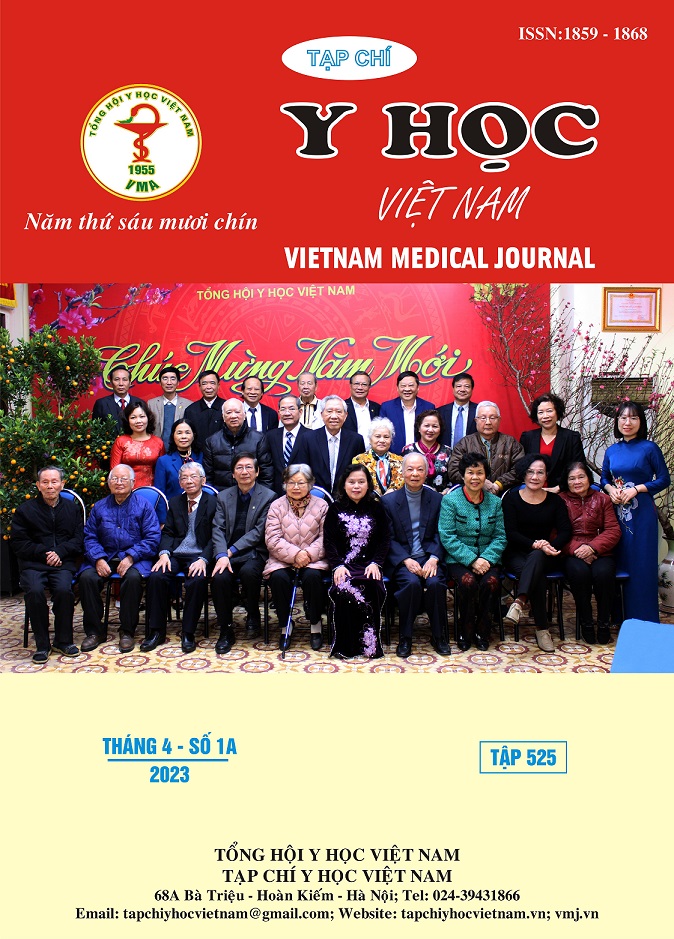CHARACTERISTICS OF CLINICAL, SUBCLINICAL AND FLUID STASIS IN PATIENTS WITH CHRONIC HEART FAILURE
Main Article Content
Abstract
Objective: Research on index of fluid stasis in patients with chronic heart failure NYHA II to IV. Subjects and methods: 105 patients with chronic hear failure NYHA II to IV were measured index of fluid stasis and nutritions by Body composition monitor (BCM). Description, cross section. Results: Patients with chronic heart failure were the average age of males younger than females (68.71 ± 12.86 years versus 75.19 ± 12.45 years, p <0.05); had an average BMI greater than those who were underweight and overweight (47.63% vs. 22.86% and 29.52%, p <0.01); NYHA level III heart failure was higher in patients with grade II and IV heart failure (44.76% vs. 29.52% and 25.71%, p <0.05). Patients with heart failure had a significantly higher prevalence of cardiovascular disease (63.81% vs. 5.71% and 30.48%, p <0.001). Patients with high levels of intracellular fluid / body weight had a lower incidence of intracellular fluid / body weight (17.14% versus 82.86%, p <0.001). Patients with chronic heart failure have excess fluid including total fluid, extracellular fluid, intracellular fluid, and excess fluid volume; The amount of excess fluid increases gradually with the severity of heart failure.
Article Details
Keywords
Chronic Heart failure, body fluids, Body Composition Monitor
References
2. Pellicori P et al (2015), “Fluid Management in Patients with Chronic Heart Failure”, Cardiac Failure Review, 01 Oct 2015, 1(2):90-95, DOI: 10.15420/cfr.2015.1.2.90.
3. Hồ Xuân Minh (2005), Nghiên cứu sự biến đổi nồng độ Natri máu, niệu ở bệnh nhân suy tim mạn tính, Luận văn Thạc sĩ, Học viện Quân y, Hà Nội.
4. Phạm Ngọc Phúc (2006), Nghiên cứu các chỉ số biến thiên nhịp tim bằng Holter điện tim 24 giờ ở bệnh nhân suy tim mạn tính, Luận văn chuyên khoa 2, Học viện Quân y, Hà Nội.
5. Paul A. Heidenreich et al (2022), “2022 AHA/ACC/HFSA Guideline for the Management of Heart Failure: A Report of the American College of Cardiology/American Heart Association Joint Committee on Clinical Practice Guidelines”, Circulation, Volume 145, Issue 18, 3 May 2022; Pages e895-e1032, https://doi.org/10.1161/CIR.0000000000001063.
6. Philipson H, Ekman I, Forslund HB, et al (2013), “Salt and fluid restriction is effective in patients with chronic heart failure”, Eur J Heart Fail. 2013;15:1304–1310. Crossref. PubMed.


